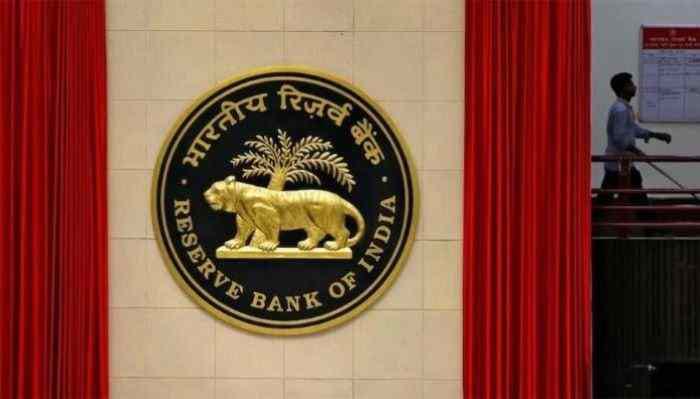RBI raises repo rate by 25 basis points to 6.5% from 6.25%
The Reserve Bank of India raises the repo rate by 25 basis points to 6.5 percent from today’s 6.25 percent. The rate is use to control inflation in the country and affects banks’ decisions on lending rates as well as their deposit rates.
The repo rate is the key interest rate at which banks lend money to each other. It is a key policy tool use by the Reserve Bank of India (RBI). Its to control inflation and growth. This rate is also refer to as CRR, i.e. Cash Reserve Requirement.

Reserve Bank of India (RBI) announce on December 22. That it is raise the repo rate by 25 basis points to 6.5 percent, a level not seen since 2014. RBI Governor Shaktikanta Das said in a statement that moderate economic activity. And consumer price inflation were still within their target band. If the central bank continues to raise rates. It could prove positive for domestic stocks.
Repo rate is a term used by banks that describes the interest rate at which they lend money to each other. It’s most commonly used in the Indian context to describe the interest rates. It is given by banks on certificates of deposit (CDs).
This is the fourth hike this year, which means that the Reserve Bank of India expects inflation and GDP to increase at a faster pace than earlier expect. This is the third increase since April 2017, when RBI hike its repo rate by 125 bp in a bid to curb inflation and boost growth.
What is RBI raises Repo Rate (RR)?
The Reserve Bank of India has raised the repo rate by 25 basis points to 6.5 percent from 6.25 percent at its monetary policy review held on Friday. The repo rate is the level of interest banks charge each other on overnight loans. The hike in the repo rate will be effective from 1st May 2023. And a potential slowdown in India’s growth, citing concerns over rising global bond yields and muted inflation.
The rate was last raised by 100bps in June 2018 to 6.50%. After which it has remained unchanged for 11 months since then. RBI governor Dr. Urjit Patel approves the change in monetary policy for August 15th. And indicates that this is the appropriate time to raise rates as inflation is below its target level of 5%. It is by reducing demand, to tame inflation and contain interest rate risks. The repo rate is the target for short-term lending by banks. Including open market operations, both domestically and internationally. It influences interbank and foreign exchange markets through its effect on the marginal cost of funds.
What is inflation?
The hike means that banks need to pay more interest on deposits and borrowings. Which could lead to higher borrowing costs and greater costs of funds for companies. This move is expected to keep inflation in check, and further strengthen its credibility as an independent central bank.
This is the seventh consecutive increase in the repo rate since January 2017. It has been consistent with the RBI’s stance on monetary policy. And its ability to conduct monetary policy with appropriate flexibility to respond to changing circumstances in India and international environments.
What is GDP?
Gross domestic product (GDP) is the standard measure of the value added create through the production of goods and services in a country during a certain period. As such, it also measures the income earned from that production, or the total amount spent on final goods and services (less imports).
In an attempt to contain inflationary pressure. The central bank has raised the repo rate four times since July 2016. When its last increase by 100 basis points – its first use of the word “yield” in a statement announcing policy decisions. The move is likely to have implications for how lenders price their bonds and therefore the banks, which depend on those payments for most of their profits, and this is in line with the expectations that a rate hike in FY2019 is not likely. RBI recently released a statement declaring that the April CPI inflation reading was below the 2% target band, which has caused concerns about monetary policy but it also stated that it would keep policy rates at their present levels for the remainder of 2017.
The interest rates are the key rates by which banks lend or borrow money. Bank lenders typically charge higher interest rates on deposits and loans than they do on similar securities or instruments they buy or sell in their own portfolios.
Reserve bank of india profile
RBI has taken this decision in line with the monetary policy statement. Which reaffirms the Indian economy’s robust growth prospects. The Reserve Bank of India (RBI) today hiked the repo rate by 25 basis points to 6.5% from 6.25%, citing higher-than-anticipated inflationary pressures. And a softer outlook for growth.
The Reserve Bank of India (RBI) decide to raise the repo rate by 25 basis points to 6.5% from 6.25%, as expected by markets. Inflation is a major focus for RBI, which raise rates last year; this increase will boost growth and inflation by bringing down the cost of borrowing for companies and banks. The repo rate is a key interest rate that determines how much money commercial banks are likely to lend. Or borrow from each other on short-term commercial loans such as mortgages, car loans or credit card debt.”



